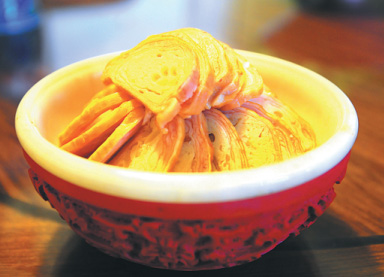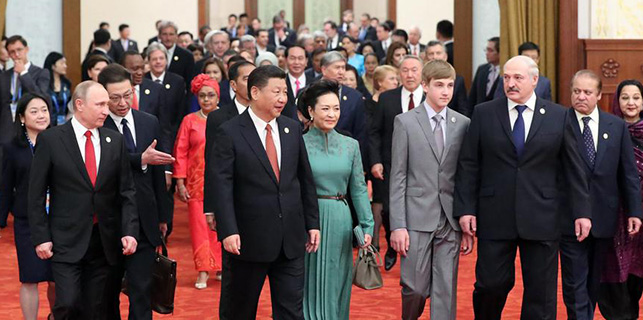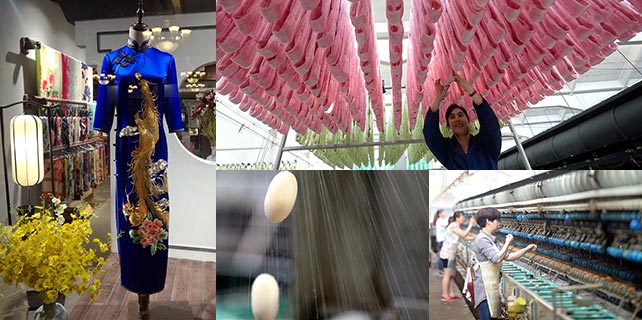Making royal cuisine accessible
 |
|
Smoky-flavored abalone roll, mixed with fish and chicken skin. [Photo by Xing Yi/China Daily] |
Jing Changlin returned to Beijing in 1969, and worked as head chef in many high-end hotels.
Then, in 1994, he was recruited by the State General Administration of Sports to plan athlete meals.
"The important thing for athletes is a balanced diet with enough protein and energy," he says.
Despite his many roles over the six decades of cooking, Jing Changlin says that the Chinese royal cuisine is his all-time favorite cuisine.
"It is a mix of local and royal dishes, a blend of Han and Manchu flavors," he says.
The Qing emperors wanted to sample flavors from all over the country, so the royal cuisine comprised 108 dishes, from both northern and southern China.
There were 30 dishes from Zhejiang and Jiangsu, 12 from Guangdong, 12 from Fujian, 30 from Shandong, 12 from Beijing, and 12 from Manchu (the name for Northeast China in the Qing Dynasty).
The dishes involved dozens of cooking methods and a wide range of ingredients and flavors.
"I have studied the royal cuisine for a lifetime," he says. "And I don't want to see it lost."






















